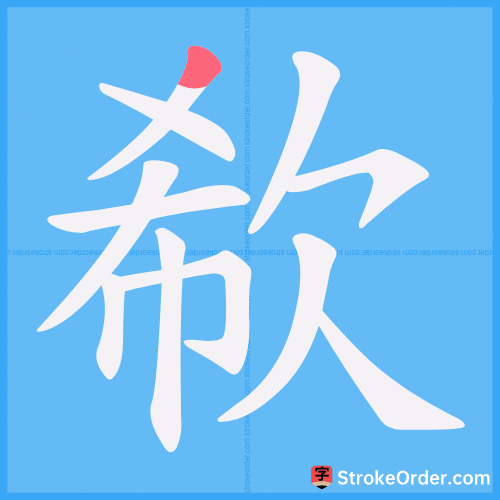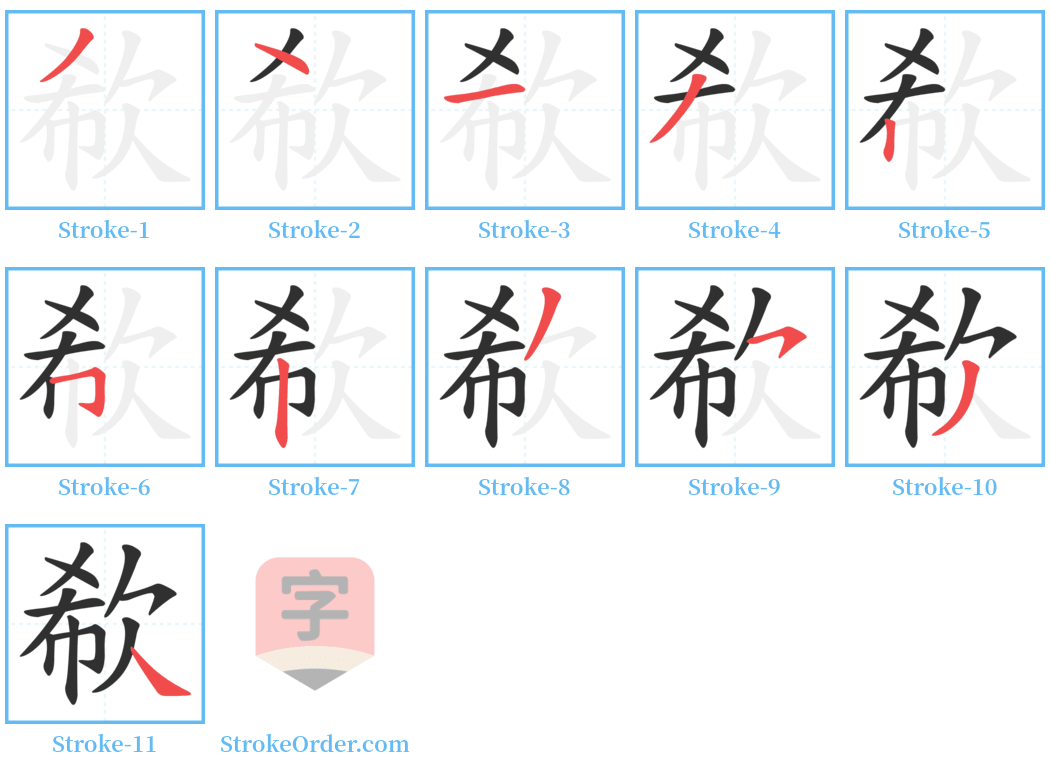欷 Stroke Order
Animated Stroke Order of 欷

Stroke Order Diagrams for 欷

Step-by-Step Handwriting Guide for 欷

Learn to Write Chinese Characters with Video Tutorials
Watch the video of writing the Chinese character "欷", learn the correct stroke order (笔顺) of the character "欷", and master the standard way of writing the character "欷".
Free Printable Handwriting Practice with Stroke Order: 欷
Printable Writing Practice Worksheet of "欷" in Portrait Orientation (Tian Zi Ge)

Printable Writing Practice Worksheet of "欷" in Landscape Orientation (Tian Zi Ge)

Information of 欷
Pinyin
xī
Radical
欠
Strokes
11 strokes
Usage
★★★
Definition
to sob
欷 [xī]
1. Weeping or sobbing.
2. Also pronounced as “xū” in the term “歔欷,” which has the same meaning as above.
3. Sighing.
欷 [xī]
1. Weeping: "The side breaths increase."
2. Also pronounced as “xū” in the term “歔欷,” which has the same meaning as above.
3. Sighing: Sighing deeply. Looking up and sighing to the heavens.
Definition: The primary meaning is weeping or choking with emotion.
Character Formation: Phono-semantic compound, composed of the component for breath (欠) and the sound element (希). The component for breath relates to exhalation.
Example Use:
1. From “Selected Works of Literature, Song Yu, The Wind Rhapsody”: The feeling is sorrowful and the sound increases with weeping.
2. Other examples include: 欷歔 (sobbing; sighing); 欷吁 (sound of lamentation).